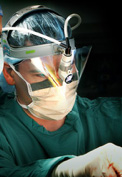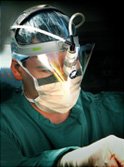Lateral Epicondylitis (Tennis Elbow)


Lateral epicondylitis, or tennis elbow, is one of the most common sources of elbow pain. The problem relates to an injury to the tendons that attach to the lateral epicondyle bone of the elbow.
Typically this is a problem that relates to repetitive injury, however, there are certainly cases where an acute injury can occur.
Diagnosis



Patients with tennis elbow typically have pain on the outside are of the elbow that is tender to touch. Lifting, carrying, and even hand shaking causes a sharp pain that may radiate down from the elbow to the wrist.
Examination findings include direct tenderness over the lateral epicondyle and pain with resisted wrist extension.
Imaging
MRI and Ultrasound can be used to diagnose lateral epicondylitis and assess the severity of the disease. Often times, however, the decisions made regarding treatment of tennis elbow are done without the use of additional imaging studies.


Non-Operative Treatment
Lateral epicondylitis will typically resolve with non-surgical treatments. There are a variety of treatments that have been used to treat lateral epicondylitis.
Medication
Over the counter Non-Steroidal Anti-Inflammatories (NSAIDs) and prescription topical anti-inflammatory creams are often part of the first line of treatment. While the pathology of lateral epicondylitis relates more to scar than inflammation, these medications often have positive responses with patients.


Stretching & Strengthening
If non-operative treatment is unable to improve symptoms, your physician may consider further investigation using an MRI. Often, contrast is injected into the shoulder to help identify a labral tear (Bankart tear).
Bracing
Braces are typically used to unload the areas of stress. A counterforce brace is placed several finger-breadths below the tender area on the bone along the muscle area of the lateral forearm. Wrist control splints can be used as well.
Operative Treatment


When non-operative treatment fails, surgical treatment can be considered. There are three methods of surgical treatment for tennis elbow:
- Open Surgery
- Arthroscopic Surgery
- Percutaneous
Recently, the TENEX FAST Technique was introduced which allowed physicians the ability to identify the pathology under ultrasound, and remove the pathologic tissue in a minimally invasive percutaneous method with only local anesthesia.







